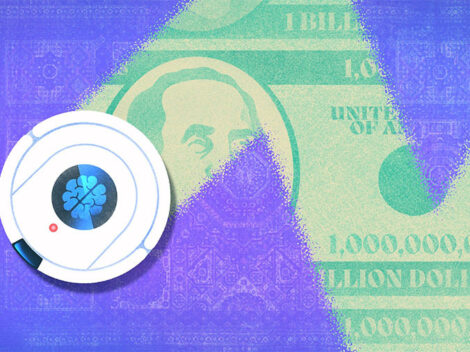While the public market has just recently flirted with a bear market, crypto investors know all about it.
As inflation rises and stocks tumble, crypto seems to have followed suit. Bitcoin—the largest cryptocurrency by market cap—is down nearly 50% in the last six months. Ether, the second largest, is down more than 55%. All of that doesn’t even touch on the TerraUSD debacle and its fallout.
Search less. Close more.
Grow your revenue with all-in-one prospecting solutions powered by the leader in private-company data.
That decline, however, also may illustrate just how far crypto has come in being embraced. Once developed to be a decentralized form of currency—separate from the machinations of government and large banks—its acceptance by large instruments due to regulation, return and general popularity have now made it undoubtedly tied to the equity market.
Beginnings
While Bitcoin was created due to the global financial crisis of 2008 and people’s distrust of structured financial systems, that does not mean it is unaffected by the same infrastructure it once looked to bypass.
“The financial crisis did lead to skepticism toward the banking system, but the system has remained robust, especially during COVID,” said Bilal Hafeez, CEO at research firm Macro Hive. “This has made the alternative financial system of crypto markets less interesting. Instead, the main appeal of crypto has been its rapid development of new forms of investment and applications.”
Perhaps ironically, some of the people who see that appeal are part of the very same infrastructure crypto once looked to shun.
“There’s just significantly more institutional interest,” said Yash Patel, general partner at Telstra Ventures, who invests in crypto startups and holds digital currency.
That interest originates with more regulation and the clarity the sector has received through recent years. This year alone President Joe Biden signed his long-awaited executive order concerning crypto, while the SEC continues to look closely at crypto and judge what type of asset it may be.
“The way to onboard users is you actually need regulations,” Patel said.
Those regulations make a new field like crypto look more like the equity or commodities market, which helps attract large institutional traders from banks to hedge funds.
Ties to the market
Interest from those large players also means crypto’s movements are correlated with the larger market as a whole—which is currently feeling bruised by the increasing cost of money and global uncertainty.
On top of those headwinds, the market views crypto as a risk-on trade, said Joseph Edwards, head of financial strategy at fund management firm Solrise Finance.
“It’s seen speculatively, and if you’re buying crypto, you’re making a speculative investment,” Edwards said.
Some of the uncertainty causing investors to turn away from risk assets like crypto is likely because of the rising cost of money due to interest rates. With interest rates rising, both tech stocks and crypto have been hit hard.
Larger institutional players have increased their volume of crypto trading through recent years. As rates increase, borrowing money to conduct those trades make the transactions less appetizing, Patel said.
“Less (trading) volume means less liquidity,” Patel said. “Then prices become more volatile.”
The narrative that Bitcoin is a store-of-value has never fully come to fruition, Edwards said.
“That’s never been fully reflected in the price value because it’s still largely bought, especially at the institutional level, as a risk asset,” he added.
“I do think that, over time, Bitcoin is going to become less correlated,” he added. “Gold is supposed to be the ultimate uncorrelated/anti-correlated asset, but even it swung up and down with equities for large parts of the 1970s and 1980s.”
Crypto winter?
However, for now crypto is tied to the markets and many agree that isn’t ideal for investors, at least in the short-term.
“My general expectations for Bitcoin and crypto in general are pretty poor,” Edwards said. “There’s not much fresh capital coming into the markets, which is always a prerequisite for market expansion.”
There certainly doesn’t seem to be a lot of faith in the market. Crypto data site Coinglass’s “Crypto Fear & Greed Index,” which measures Bitcoin market sentiment—with zero indicating extreme fear and 100 being extreme greed—has been bouncing around the lower teens for days.
“I think in the next two quarters you will see a lot of volatility,” Patel said.
While Patel said he is not sure if it will go as low as the $15,000 and $18,000 someone predicted—it hit a high of $68,789 in November—it likely will continue to fall until inflation comes under control.
“Crypto was a hedge against inflation,” said Matthew Gould, co-founder and CEO of Unstoppable Domains—which launches domains secured by blockchains—and a crypto investor for a decade.
“It’s a forward-looking asset,” he added. “With higher spending—the higher crypto prices go. Lower spending means lower crypto prices.”
However, not all may be doom and gloom. Patel said he remains bullish in the long run, pointing to the upward trajectory of many so-called utility tokens on the market.
Utility tokens—such as Helium’s blockchain-powered decentralized wireless network that gives users tokens in return for data—have proven popular with both consumers and developers. Tokens have seen significant growth in the last several months even as the market fluctuates.
“With developers and retail investors, the excitement is still there,” he said.
Overall, however, many remain bearish for Bitcoin.
“There is a real chance we could head toward $25,000,” Hafeez said. “The picture could improve if interest rates stop rising and institutional flows return to Bitcoin.”
Illustration: Li-Anne Dias.

Stay up to date with recent funding rounds, acquisitions, and more with the Crunchbase Daily.




![Illustration of a guy watering plants with a blocked hose - Global [Dom Guzman]](https://news.crunchbase.com/wp-content/uploads/quarterly-global-3-300x168.jpg)
67.1K Followers